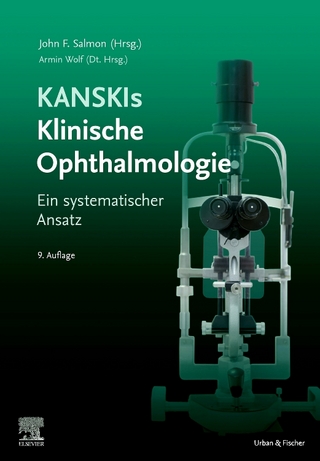
Dominant Exudative Vitreoretinopathy and Other Vascular Developmental Disorders of the Peripheral Retina
Kluwer Academic Publishers (Verlag)
978-90-6193-805-7 (ISBN)
- Titel ist leider vergriffen;
keine Neuauflage - Artikel merken
Fluorescein was seen to leak from the retinal vessels localized in this marginal zone, and in some eyes from massive fibrovascular lesions as well. Similar fluorescein- angiographic changes have been described in recent years in other reports on families with DEVR (Nijhuis et aI. , 1979; Slusher and Hutton, 1979; Dudgeon, 1979; Ober et a1. , 1980; Laqua, 1980). In 1979 I commenced a clinical study of this still little-known condition at the Nijmegen University Institute of Ophthalmology (The Netherlands).
I: The normal vasculature of the peripheral retina.- 1. Development and anatomy of the normal vasculature of the peripheral retina.- 1.1 Definitions of anatomical boundaries.- 1.2 Development and regression of the hyaloid vessels and the primary vitreous.- 1.3 Development of the choroid of the peripheral fundus.- 1.4 Development of the retinal vasculature.- 1.5 Anatomy of the vasculature of the peripheral retina.- 1.6 Structure of the retinal vessels and the vitreoretinal juncture of the peripheral fundus.- 2. Clinical examination of peripheral retinal blood vessels and circulation.- 2.1 Indirect ophthalmoscopy.- 2.2 Three-mirror contact lens examination.- 2.2.a The biomicroscopic features of the normal vasculature of the peripheral retina.- 2.3 Photography and fluorescein angiography of the peripheral fundus.- 2.3.a The fluorescein angiogram of the normal peripheral fundus.- II: Disturbed development of the peripheral retinal vessels.- 3. Clinical studies of families with dominant exudative vitreoretinopathy.- 3.1 Materials and methods.- 3.2 The A family.- 3.3 The B family.- 3.4 The C family.- 3.5 The D family.- 3.6 The E family.- 3.7 The F family.- 3.8 The G family.- 3.9 The H family.- 3.10 The I family.- 4. Results and discussion of the family studies.- 4.1 Numbers of affected and probably affected persons in the various families.- 4.2 Age and sex distribution of the affected and probably affected persons.- 4.3 Visual acuity.- 4.4 Refraction.- 4.5 Amblyopia.- 4.6 Nystagmus.- 4.7 Eye position.- 4.8 Intraocular pressure.- 4.9 Anterior segment.- 4.10 Vitreous.- 4.11 Fundus.- 4.11.a Biomicroscopic changes.- 4.11.b Fluorescein-angiographic changes.- 4.12 Visual fields.- 4.13 Ultrasonography.- 4.14 Electroretinography and electro-oculography.- 4.15 Dark adaptation.- 4.16 Colour vision.- 4.17 Histology.- 4.18 General physical examination.- 4.19 Stages and course.- 5. Genetic aspects and pathogenesis of dominant exudative vitreoretinopathy.- Genetic aspects.- 5.1 Mode of transmission.- 5.2 Gene penetrance.- 5.3 Gene expression.- 5.3.a Genetic factors.- 5.3.b Influence of the "environment".- 5.4 Incidence and distribution of the gene.- 5.4.a Ethnic and geographical distribution.- 5.5 Genetic counselling.- Pathogenesis.- 5.6 DEVR as a vascular developmental disorder.- 5.7 Deformation of the foetal network of retinal vessels as direct consequence of disturbed vascular development. A hypothesis.- 5.8 Objections to qualification of DEVR as "vitreoretinal dystrophy".- 6. Prevention and treatment of complications of dominant exudative vitreoretinopathy.- 6.1 Early diagnosis and selection of high-risk patients.- 6.2 Treatment.- 7. Congenital retinal fold (ablatio falciformis congenita).- 7.1 The clinical features of congenital retinal fold.- 7.2 Conditions which may be associated with congenital retinal fold.- 7.3 Congenital retinal fold as a manifestation of DEVR.- 7.4 Congenital retinal fold and microcephaly.- 7.5 Pathogenesis of congenital retinal fold.- 7.5.a Early versus late hypothesis.- 7.5.b Additional pathogenetic mechanisms.- 7.5.c Unilateral congenital retinal fold of obscure pathogenesis.- 8. Retrolental fibroplasia.- 8.1 Clinical symptoms.- 8.1.a Active retrolental fibroplasia.- 8.1.b Cicatricial retrolental fibroplasia.- 8.2 Histology.- 8.3 The influence of oxygen on the development of the immature retinal vasculature.- 8.4 Treatment.- 8.5 Differential diagnosis.- 8.5.a "Retrolental fibroplasia" without neonatal oxygen administration or prematurity.- 8.6 Consequences of oxygen administration to premature neonates with the genotype of DEVR.- 9. Affections with congenital or neonatal vitreous organizations and retinal detachment.- 9.1 Incontinentia pigmenti (Bloch-Sulzberger syndrome).- 9.1.a Clinical ocular symptoms.- 9.1.b Genetic aspects.- 9.1.c Histology and pathogenesis.- 9.1.d Differential diagnosis.- 9.1.e Treatment.- 9.2 Norrie's disease.- 9.2.a Clinical symptoms.- 9.2.b Histology.- 9.2.c Pathogenesis.- 9.2.d Differential diagnosis.- 9.3 Reese-Blodi-Straatsma syndrome and trisomy 13.- 9.3.a Histology.- 9.3.b Pathogenesis.- 9.3.c Differential diagnosis.- 9.4 Congenital encephalo-ophthalmic dysplasia.- 9.4.a Clinical symptoms.- 9.5 Proliferative retinopathy in anencephalia.- 9.5.a Pathogenesis.- 9.6 Familial unilateral proliferative retinopathy.- 10. Observations on Wagner's syndrome, sex-linked juvenile retinoschisis and juvenile rhegmatogenous retinal detachment.- 10.1 Wagner's syndrome.- 10.1.a Clinical symptoms.- 10.1.b Histology.- 10.1.c General manifestations: clefting syndromes.- 10.1.d Fluorescein-angiographic study of the circulation of the equatorial retina and choroid.- 10.1.e Pathogenesis of the aberrant configuration of retinal vessels in the posterior pole and ectopia of the macula.- 10.2 Sex-linked juvenile retinoschisis.- 10.2.a Clinical symptoms.- 10.2.b Vascular changes.- 10.2.C Histology and pathogenesis.- 10.3 Juvenile rhegmatogenous retinal detachment.- 10.3.a Personal observations.- 11. Congenital bilateral arterial anastomosis between the choroid and the peripheral retina.- 12. Coats' disease and retinal angiomatosis.- 12.1 Coats'disease.- 12.1.a Clinical symptoms.- 12.1.b Histology.- 12.1.c Pathogenesis.- 12.1.d Differential diagnosis.- 12.1.e Treatment.- 12.2 Retinal angiomatosis.- 12.2.a Clinical symptoms.- 12.2.b Histology and pathogenesis.- 12.2.C Differential diagnosis.- 12.2.d Treatment.- 12.3 Sturge-Weber's syndrome.- III: Additional differential diagnoses from dominant exudative vitreoretinopathy.- 13. Congenital conditions not associated with retinal vascular developmental disorders.- 13.1 Persistent hyperplastic primary vitreous.- 13.1.a Clinical symptoms.- 13.1.b Histology.- 13.1.C Differential diagnosis.- 13.1.d Posterior PHPV and congenital retinal fold.- 13.2 Congenital toxoplasmosis.- 13.3 Retinoblastoma.- 14. Acquired conditions.- 14.1 Eales'disease.- 14.1.a Clinical symptoms.- 14.1.b Differential diagnosis from DEVR.- 14.2 Sickle cell retinopathy.- 14.2.a Differential diagnosis from DEVR.- 14.3 Pars planitis.- 14.3.a Clinical symptoms.- 14.3.b Differential diagnosis from DEVR.- 14.4 Toxocariasis.- 14.4.a Clinical symptoms.- 14.4.b Differential diagnosis.- 14.5 Myopia.- 14.5.a Perfusion disorders of the peripheral retina in myopia.- 14.5.b Ectopia of the macula in high myopia.- 14.6 Ectopia of the macula due to a pucker of the peripheral retina.- Summary.- Samenvatting.- References.- Curriculum vitae.
| Reihe/Serie | Monographs in Ophthalmology ; 5 |
|---|---|
| Zusatzinfo | biography |
| Verlagsort | Dordrecht |
| Sprache | englisch |
| Maße | 190 x 250 mm |
| Gewicht | 920 g |
| Themenwelt | Medizin / Pharmazie ► Medizinische Fachgebiete ► Augenheilkunde |
| ISBN-10 | 90-6193-805-8 / 9061938058 |
| ISBN-13 | 978-90-6193-805-7 / 9789061938057 |
| Zustand | Neuware |
| Haben Sie eine Frage zum Produkt? |
aus dem Bereich


